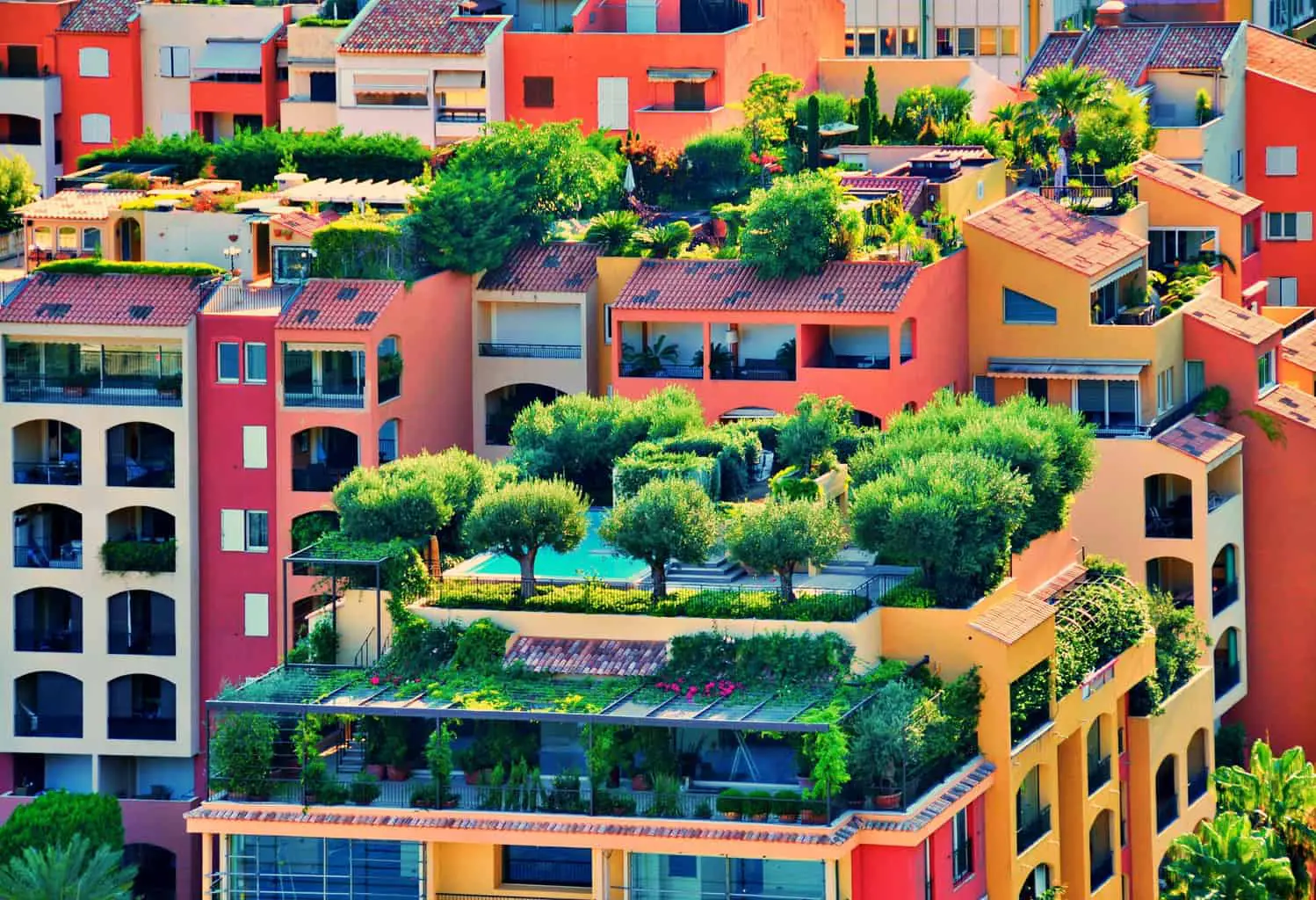Looking into renovating your home and curious about eco-friendly roof material options?
Residential re-roofing is a serious project. After all, the roof is one of the most visible and exposed parts of your home. The materials you choose should be as durable as they are attractive.
Roofing design determines your home’s internal temperature, too. Sunlight hitting the roof is one of the main causes of heat buildup in houses. Roof materials should also be as energy efficient as they are affordable.
Is it possible to have long-lasting, heat reflective, environmentally friendly, and sustainable roofing?
Let’s find out together.
Below is a primer on eco-friendly roof insulation and other components: everything from defining important terms to discussing roof material options.
Eco-Friendly Roof vs. Sustainable Roofing: What’s the Difference?
Eco-friendliness and sustainability are not interchangeable.
When something is eco-friendly, it is not harmful to its surroundings and the environment. These products and materials may also encourage green practices, such as pollution reduction and conservation of natural resources.
When something is sustainable, its raw materials are sourced without permanently damaging or depleting its origins. Anything made with fossil fuel-derived or mined materials is not sustainable.
Are Metal Roofs Eco-Friendly or Sustainable?
Metal roofing typically uses mined and refined materials such as aluminum, copper, steel, and zinc. Manufacturing this type of roofing is energy-intensive, but they are very durable and recyclable.
You can call a metal roof environmentally friendly but it’s uncommon to find an example that also counts as truly sustainable roofing. If all the parts are reclaimed or 100 percent recycled, you’ve got a sustainable metal roof.
Are Clay Tiles Eco-Friendly or Sustainable?
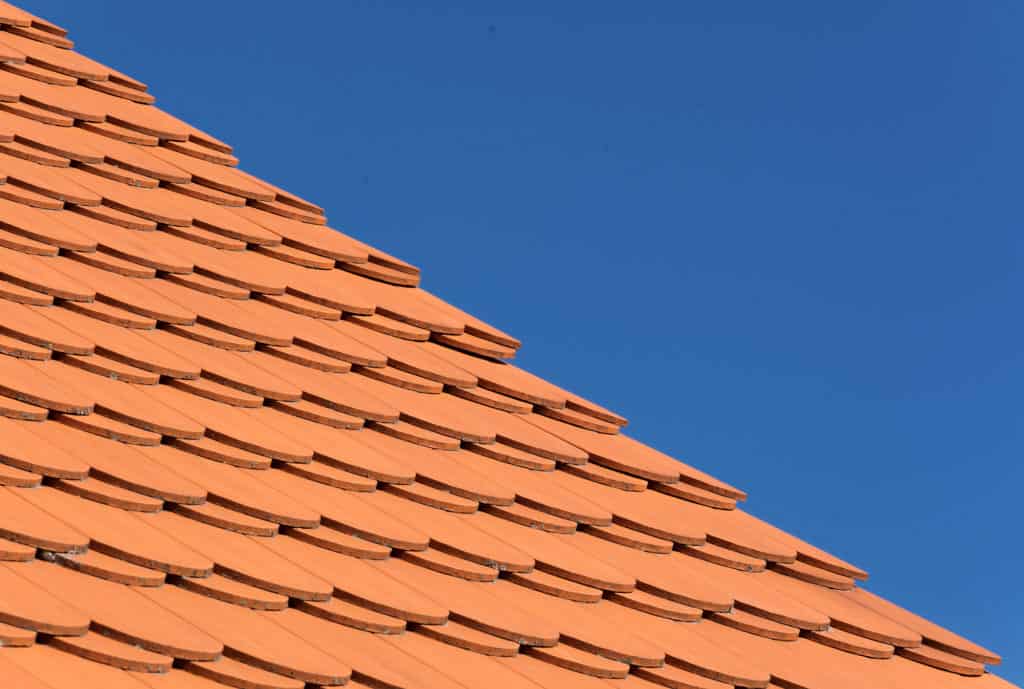
Like metal roof materials, clay or terracotta tiles are also extremely long-lasting.
Authentic tiles are made from natural clay, shaped and then fired at a high temperature. Some variants are glazed or painted in colors other than the well-known reddish-brown terracotta hue.
Terracotta is a stable material that is eco-friendly, biodegradable, and easily reusable. Though natural clay is mined, it’s an abundant natural resource.
Many manufacturers claim that terracotta tiles are sustainable because of this. However, true sustainability is hard to determine, even with responsible mining practices.
What Counts as an Eco-Friendly Roof?
You should always look at more than what green roof materials are made of and how they’re manufactured and transported.
How your eco-friendly roof performs throughout its lifespan is equally important.
Think of how your roofing will affect your home’s interior. Consider the ease or difficulty attached to the eventual repair, disposal, or recycling of the materials.
What Is a Cool Roof?
A cool roof features increased heat and solar reflective properties. In the U.S., the Energy Star program certifies materials ideal for creating a cool roof.
It’s important to note that some cool roofs are not completely eco-friendly. If the parts are fossil fuel-based or not recyclable, they’re not true green roof materials.
What Is a Green or Living Roof?
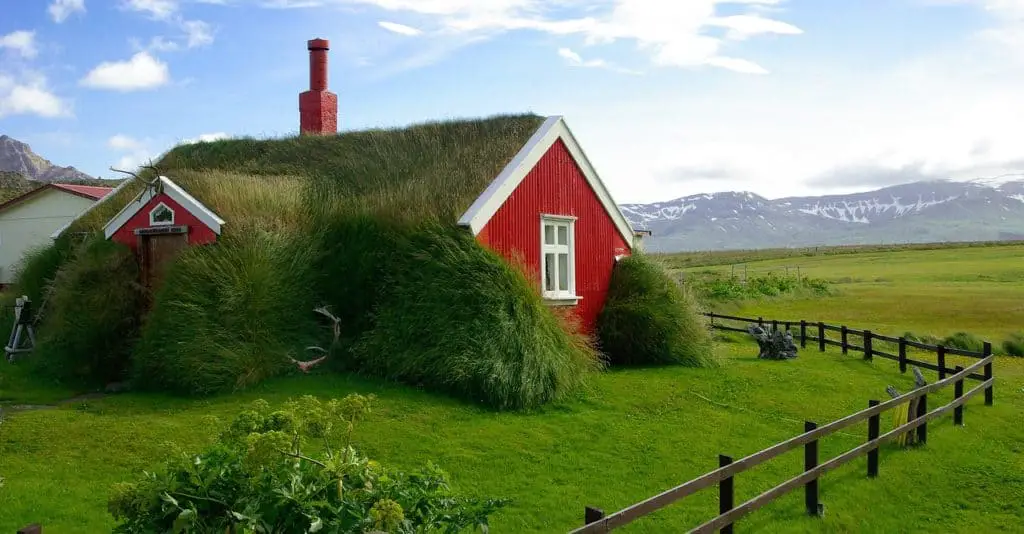
If a roof is covered with living vegetation, it’s most likely a type of green roof. It may also be considered a type of cool roof.
Added greenery and shade from a rooftop garden can lower the temperature of a formerly exposed roof by more than 80°F (27 °C).
An intensive green roof is not common in residential settings, because it requires several feet of soil and a well-maintained garden. Green roofs like this are large and typically function as a recreational space for humans or a habitat for animals.
Homeowners may look into extensive green roofs, which need up to four inches of soil and usually have low groundcover vegetation.
Even for small homes, a living roof can be heavy, so make sure your house has the structural foundation to support a rooftop garden.
Consider the weight of the soil, vegetation, and any accumulated rainwater. All of this can amount to more than 25 pounds per square foot (122 kg per m²).
Installing trays filled with soil and vegetation on top of an existing roof is a low cost and non-permanent alternative.
The Environmental Protection Agency in the U.S. estimates the cost of a simple living roof at around $10 to $25 for each square foot. However, you also have to factor in long term upkeep and maintenance costs.
Do Solar Panels Make an Eco-Friendly Roof?
Installing photovoltaic panels above your roofing helps make your entire home more eco-friendly, but it can’t change the design or composition of your original roof.
If your house features old asphalt shingles, for example, you can’t call the covering an eco-friendly roof – even with solar panels.
Want to replace old roofing and install solar panels, but don’t have the budget to do both? Ask your contractor about solar shingles.
These can be integrated into your existing roof and do not have to cover your entire house. You may combine them with other low-cost eco shingles.
What Is the Eco-friendliest Roofing Material?
Below are 12 green roof materials you can choose from to create an eco-friendly roof.
Note that most of these options are not truly sustainable or even 100% recyclable. Some are also only considered eco-friendly because the heat reflection they encourage keeps structural energy consumption down.
1. Factory-applied or Field-applied Additional Coating

This is not a base material for an eco-friendly roof, but something that’s added on top of it. You can use coating like this on almost any type of roofing.
Remember the above discussion about cool roofs? One of the easiest ways to create a cool roof is to use white paint and a special type of coating on what’s already built on top of your home.
Dark roofs can reach up to 150°F (65°C) during hot summers. Cool roofs can be more than 50°F (10°C) cooler, lowering air conditioning costs and saving energy.
When enough homes in a community have cool roofs, the phenomenon may also help dispel the heat island effect.
For example: When an entire Philadelphia city block used a special white and reflective coating on their roofs, the air temperature in the surrounding area dropped one degree.
2. Coated Metal Roofing
Choose metal roofing with high recycled content and painted with a light color or reflective coating.
Bare metal conducts heat, and without the proper insulation and treatment, you’ll get a hot roof instead of a cool one.
Watch out for copper or zinc in the coating. It’s best to avoid them if you can because trace amounts of these metals can wash off and get into nearby water sources, negatively affecting aquatic life.
3. Clay or Terracotta Tiles

These green roof materials are popular in warmer climates.
Their weight and heft indicate sufficient thermal mass to keep the air inside a home cool even on a very hot day.
The usual clay tile curved shape may also help with ventilation throughout the roof’s surface.
Salvaged or reclaimed terracotta tiles in lighter colors are best for the environment.
4. Slate or Stone Roofing
Like clay, slate or stone is a long-lasting material. If used as roofing, it may outlast the rest of the house.
While slate tiles or stone roofing isn’t toxic or harmful to the environment, it’s worth noting that it is one of the least sustainable options listed.
Mining, processing and transporting stone takes a significant amount of energy. Slate or stone roofing is also very heavy and expensive. You may have to make structural adjustments to accommodate the weight of this material.
Again, the eco-friendliest way to go about creating a stone roof is to look for reclaimed components.
5. Roof Pavers or Paving Tiles
These roof materials are thick and as heavy as stone, sometimes weighing more than 20 pounds per square foot (98 kg per m²).
Made from recycled cement and aggregate, pavers are non-hazardous and environmentally friendly.
Because of their smooth and solid nature, they provide excellent light reflection and eco-friendly roof insulation.
6. Concrete or Fiber-Cement Shingles
Unlike roof pavers, fiber-cement shingles are more fragile and may often be manufactured with brand new Portland cement.
For these to be eco shingles, the materials need to be recycled cement, pulp, and fiber.
Choose fiber-cement shingles if you need the durability and weight of concrete but want the aesthetic of roof shingles.
7. Recycled Synthetic or Composite Shingles
Want a shingle roof from recycled materials? These eco shingles are what you need.
They’re commonly used for roofing replacements when updating old houses. Many manufacturers even offer a built-in recycling program.
Composite shingles can mimic the look of other raw materials, making them very popular.
If you like slate shingles but prefer lightweight roofing, you can use these green roof materials. Recycled synthetic shingles can also look like wood or asphalt shingles.
8. Wood Shingles and Shakes
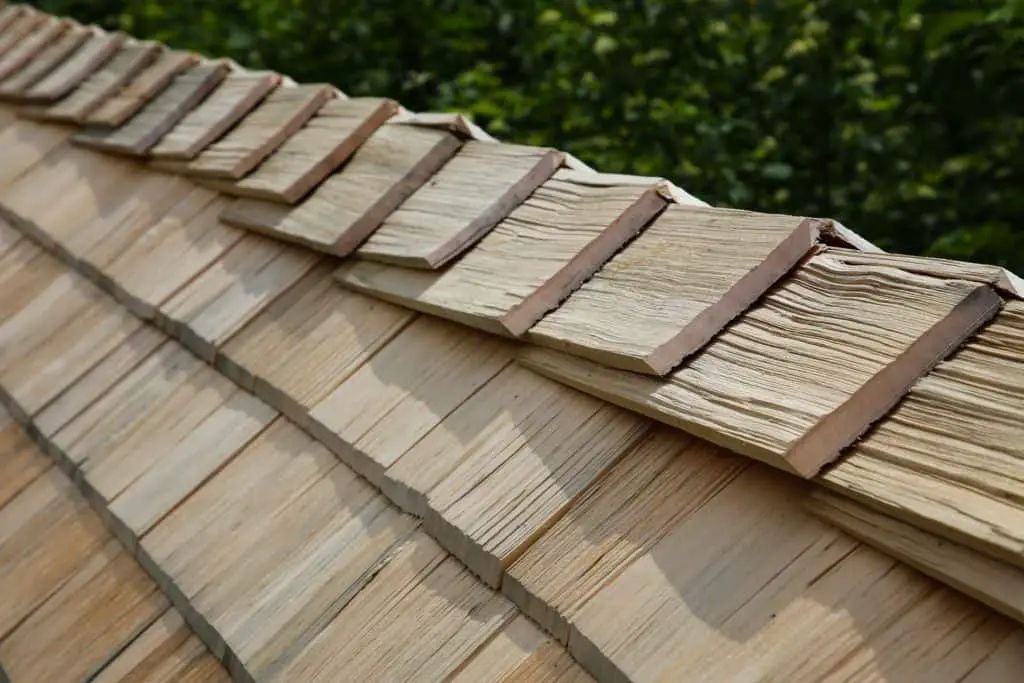
Wood makes for sustainable eco shingles and shakes, although this type of roof material is not as durable as other options.
Naturally flammable and exposed to the elements, a wood roof may only last 15 years. Without the correct engineering, wood roof materials are also one of the most heat absorbent.
Shingles and shakes aren’t smooth, a quality that improves how much heat bounces off a roof. Paint the wood a bright and reflective white to offset the bumpiness of the shingles and shakes.
Sustainability depends on the source. Make sure the materials are made from FSC-certified wood or produced locally.
9. Single-Ply Thermoset or Synthetic Rubber Roofs
Thermoset membranes are definitely not sustainable. They’re made from natural gas and oil, and function as a bonded and cured thick coat applied to base roof materials composed of similar elements.
Think of this as a factory-applied coating on an elevated level.
The main use of a single-ply thermoset is insulation. Because the materials are pre-insulated and not made on-site, the quality of insulation is more consistent.
Choose a white single-ply thermoset membrane to create a durable and cool roof.
10. Single-ply Thermoplastic Roofs
Single-ply thermoplastic membranes work the same way a single-ply thermoset does.
However, due to the specific nature of the thermoplastic, these membranes can be bound to roofing components made from a wider range of raw materials.
Thermoplastic roofs have antibacterial, UV-absorbing and fire-retardant properties. Rolls of these membranes come in several colors and can be applied to existing roofing to improve its cooling properties.
While not sustainable, thermoplastic membranes can futureproof and extend the lifespan of old roofing.
11. Modified Bitumen Roofing
The first and final type of membrane roof materials on this list, modified bitumen is an evolution of asphalt roofing.
Sometimes called a cap sheet, these membranes typically function as reinforcing material. They are ideal for heat and moisture insulation.
Modified bitumen sheet membranes are made from layers of fabric, rubber, plastic, minerals, and asphalt. In some cases, it can be used as the main roofing system.
Most membrane roofing material needs heat-sealing, but some variants of modified bitumen come with an adhesive. This cuts down on fumes that may be harmful to the environment.
Like synthetic rubber and thermoplastic, modified bitumen is not generally an eco-friendly material. However, in the correct colors, it can help create a cool roof.
12. Rooftop Gardens
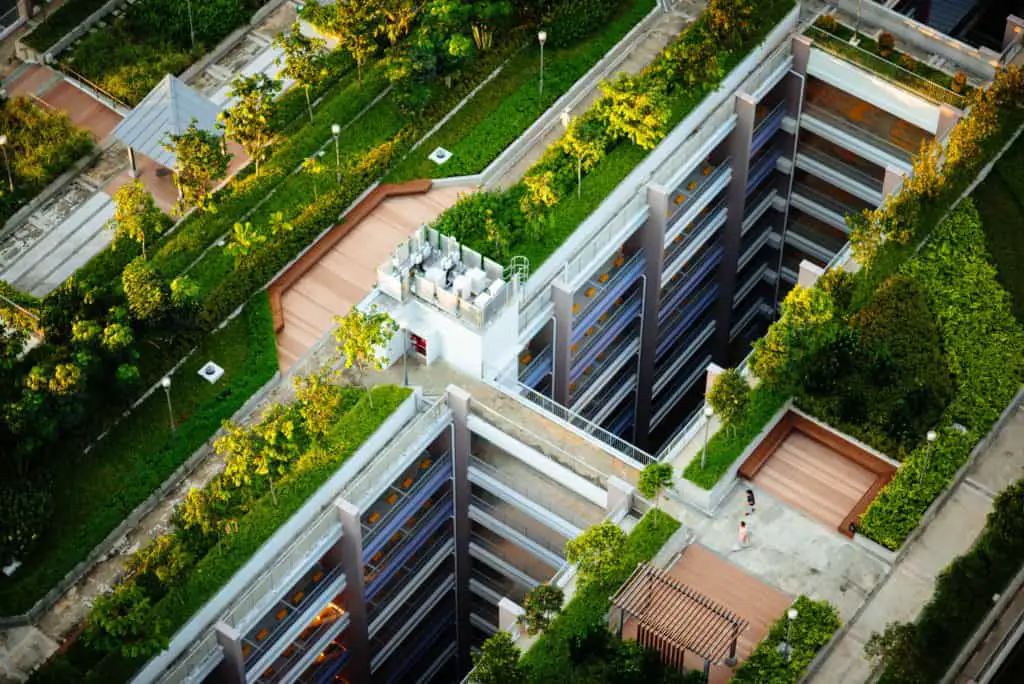
As discussed above, you may add soil and vegetation to an existing roof to make it eco-friendly.
A living roof may be the eco-friendliest roof option, if only because it is the only type of roof that gives back to the environment before the end of its lifespan.
However, it can be a big investment. A green roof also requires a durable and well-insulated base, which may not be accomplished on a tight budget without making concessions affecting the overall eco-friendliness of the project.
What Is the Least Expensive Eco-Friendly Roofing Material?
When searching for the least expensive option, upfront and maintenance costs should be considered.
Ask about warranty periods, too. You may be surprised how efficiently eco-friendly and sustainable roofing can pay for itself over enough time.
What if you’re simply renovating and can’t afford to completely replace your roof?
Paint it white or with a reflective coating. This strategy doesn’t cost much and works with virtually all types of roofing.
What Other Green Home Improvements Would Complement an Eco-Friendly Roof?
An eco-friendly roof works best with other green improvements.
You may install more efficient plumbing with low-flow showerheads and toilets.
Rain barrels or more sophisticated greywater systems may be especially compatible with a green roof.
Do you want to overhaul your house and make it more environmentally friendly? Check out our tips for building an eco-friendly home.
You Might Also Like…
- Is Fast Food Bad for the Environment? (& What You Can Do)
- Is Fabric Softener Bad for the Environment? (+5 Eco-Friendly Options)
- Is Fuel Dumping Bad for the Environment? (& How Often It Happens)
- Is Electricity Generation Bad for the Environment? (What You Should Know)
- Is Dry Cleaning Bad for the Environment? (4 Surprising Facts)
- Is Diamond Mining Bad for the Environment? (Important Facts)
- Is DEET Bad for the Environment? 4 Effects (You Should Know)
- Is Cat Litter Bad for the Environment? (5 Common Questions)
- Is Burning Cardboard Bad for the Environment? (6 Facts)
- Is Burning Paper Bad for the Environment? (6 Surprising Facts)
- Is Burning Leaves Bad for the Environment? (7 Quick Facts)
- 4 Natural Cleaners for Quartz Countertops
- 6 Eco-Friendly Acrylic Paint Brands (For Sustainable Artists)
- 5 Eco-friendly Alternatives to Acrylic Paint (& How to Make Them)
- Is Acrylic Paint Bad for the Environment? (7 Quick Facts)
- Is Acrylic Yarn Bad for the Environment? 8 Crucial Facts
- Is Acrylic Bad for the Environment? (8 Quick Facts)
- Is Aluminum Foil Bad for the Environment? 7 Quick Facts
- Is Bleach Bad for the Environment? 6 Crucial Facts
- Is Lithium Mining Bad for the Environment? 6 Crucial Facts

